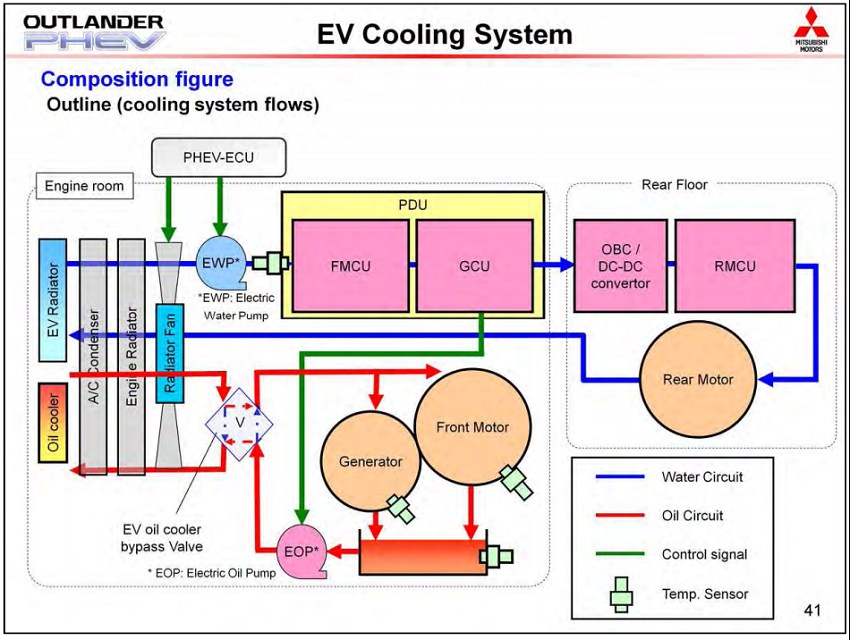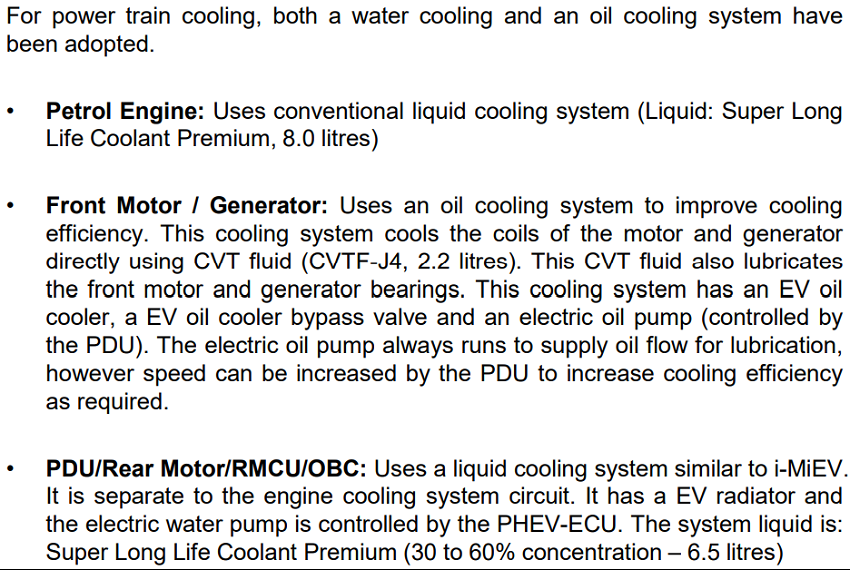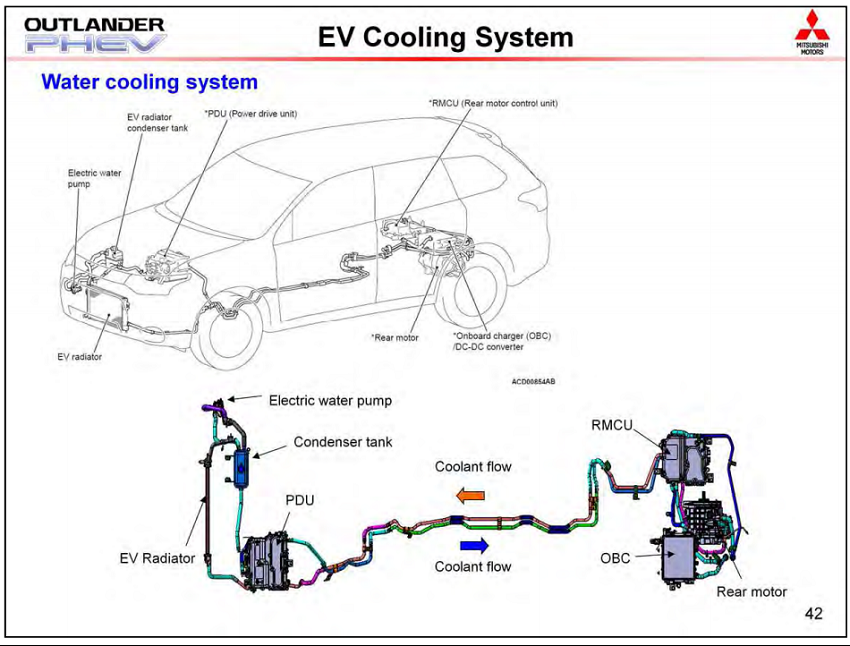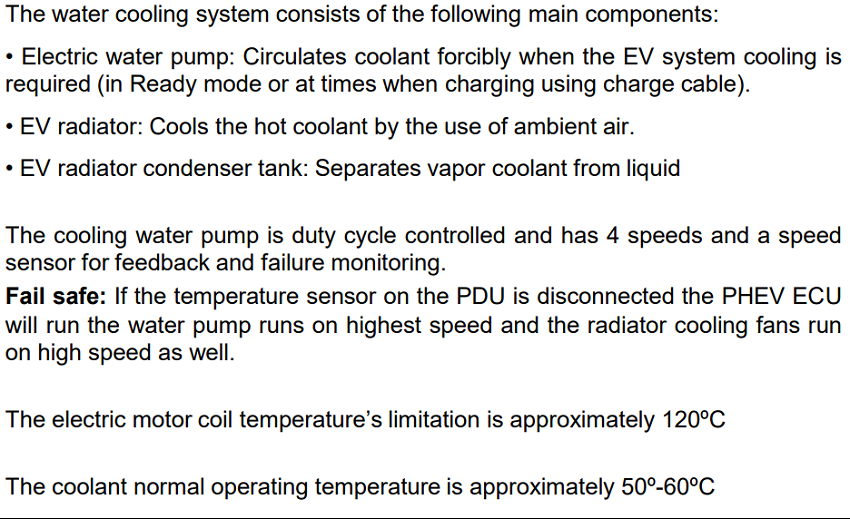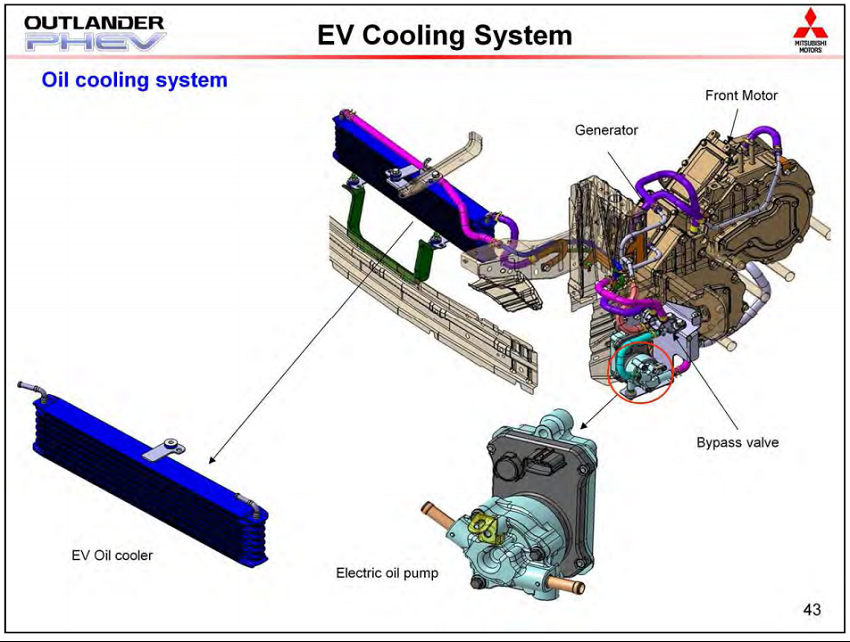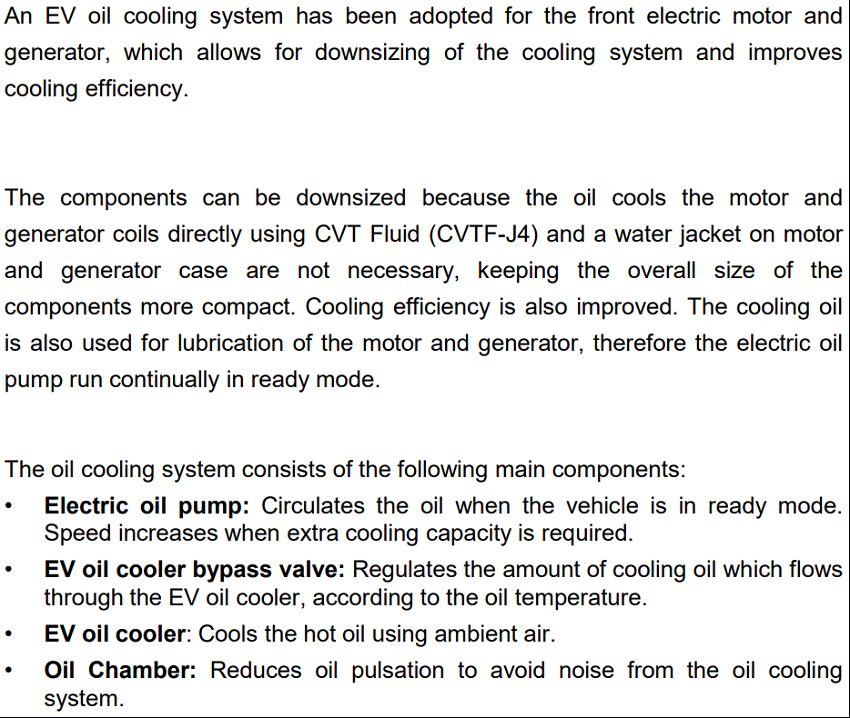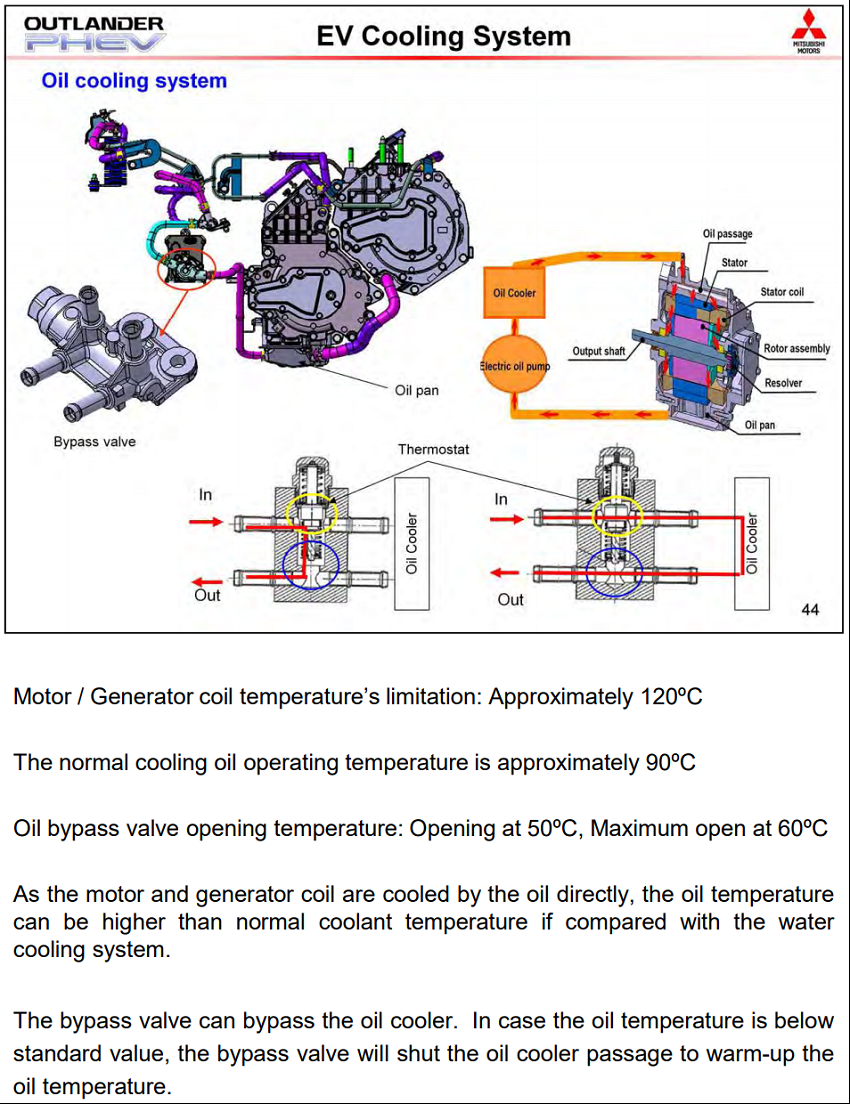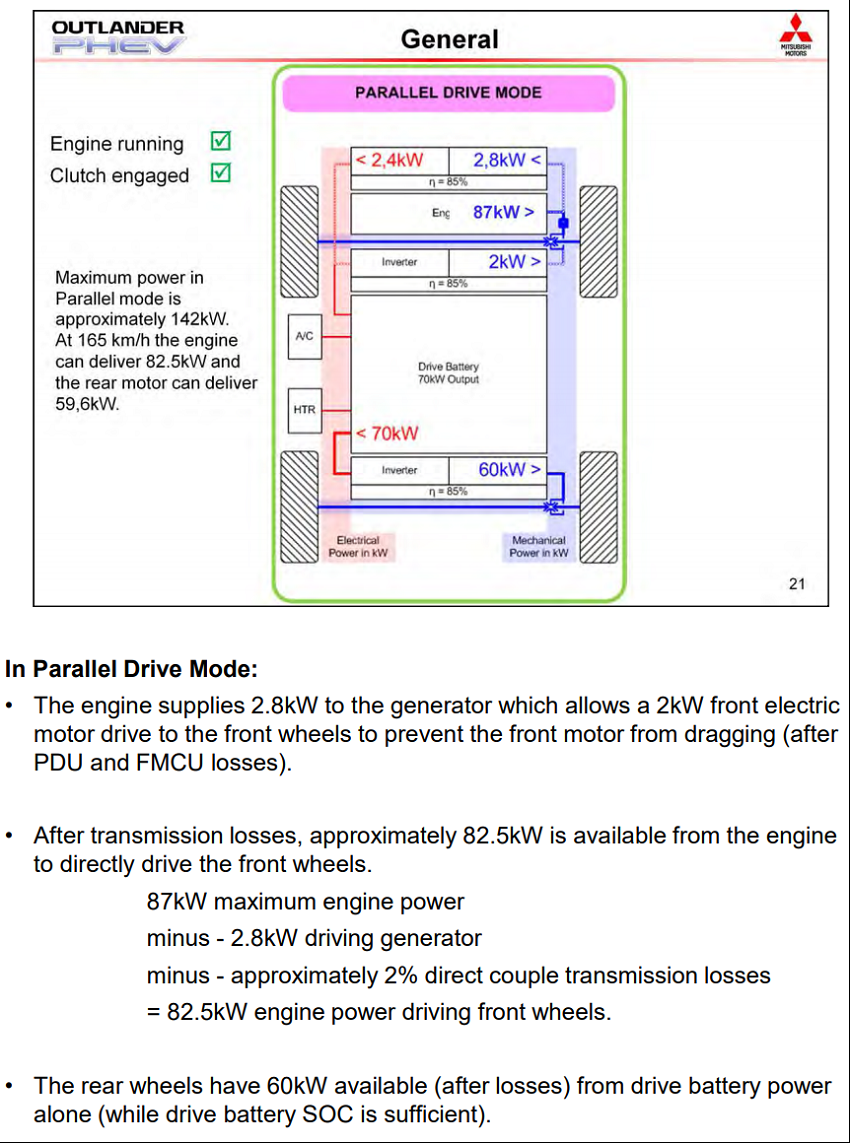Trex
Well-known member
Hi folks,
Now from reading some of the comments here I get the impression that some think that B0 on the paddles is using no energy from our drive batteries ie B0 = no regen, so no power in or out of the drive (or traction) battery.
Now I can see why people would think that because some of our gauges are not showing any power being used or added to the battery when in B0. For example on the MMCS power dial on my oldest PHEV at 60kph it takes approx 7.5 kW of power to hold that speed, as shown on the MMCS dial, travelling on the relatively flat road here with no AC or heating. But when I lift my foot off the accelerator in B0 it show 0 kW is being used on the dial. :shock:
Now here is the problem. To make a electric motor "freewheel" (or 2 in our case being the front axle and back axle motors) or get rid of the "drag" of an electric motor as seen in B0 requires power. Sure not as much as that 7.5 kW I mentioned previously but it is there.
Now lets look at some examples. Now we must first remember that just turning on my PHEV costs me .33 kW (or 330 Watts) of power as seen by the EVbatmon app. This is not moving as in being in Park or Neutral on the transmission, no AC, no heating, and no lights etc. We can talk about these what I call "standby" loads later if you want to but they are there and include items, from memory, like the EV Cooling System etc.
Now at 60 kph I see approx 1.29 kW of power in B0 so subtract that .33 kW I was talking about above give us approx .96 kW (or 960 Watts) of power being pulled from our drive battery. Now we should also remember that approx .746 kW ( or 746 Watts ) is 1 hp (or 1 horse power ) so its not a insignificant amount IMO
Now at 110 kph I see approx 2.54 kW of power being used in B0. Subtract that .33 kW again gives us approx 2.21 kW of power just to "freewheel" those electric motors.
Now I put that freewheel in brackets purposely ie "freewheel" because there is still a little "drag" in those electric motors that Mitsubishi is not getting rid of completely in B0 it would seem.
An example is in Parallel mode at 110 kph on my PHEV I see approx 4.4 - 4.87 kW. Subtract that .33 kW again so approx 4.07 to 4.54 kW of power Mitsubishi provide to the electric motors to get rid of the drag of them at speed.
Why am showing such varied amount above ie 4.4 - 4.87 kW. It is because I am looking at two different gauges on the EVbatmon app. One is Power out ( power from or to the drive battery ) and another is Gen power (Generator power) and I am trying to memorise them (to write them down later) while driving by myself and they are varying a small amount all the time even on the very flat road I drive to measure them.
I have also not mentioned there are some losses in the conversion of DC to AC here and we can talk about that later as well if you like.
Now I have again purposely kept this reasonably non technical, I hope :? , in nature for this General section of the forum. For example I am trying not bring up terms like Back emf in electric motors ect to make it easier for us all to understand. Please do not frightened of those power terms I used like kW or watts or hp. Being scared to show your ignorance of such matters is quite normal IMHO but you should try and fight that impulse and ask questions. We were all beginners once.
So hopefully I have helped some people here learn a little more about the PHEV because I am still learning new "stuff" about it myself nearly all the time.
Ps Now I was in quite a hurry to write this, so I may have been a little rushed in my explanation, so again please ask those question if you do not understand me and I will try harder in my followup explanations. But as I have said before I am not a teacher as such. I am just a lowly engineer that has to deal with this sort of "stuff" nearly everyday of my professional life so it is hard for me to explain it easily for others. I really hope I did not stuff up too badly here in this topic. :?
Regards Trex.
Wow
 lots of edits in spelling and pronunciations to fix up in my rushed explanation. My bad.
lots of edits in spelling and pronunciations to fix up in my rushed explanation. My bad.
Now from reading some of the comments here I get the impression that some think that B0 on the paddles is using no energy from our drive batteries ie B0 = no regen, so no power in or out of the drive (or traction) battery.
Now I can see why people would think that because some of our gauges are not showing any power being used or added to the battery when in B0. For example on the MMCS power dial on my oldest PHEV at 60kph it takes approx 7.5 kW of power to hold that speed, as shown on the MMCS dial, travelling on the relatively flat road here with no AC or heating. But when I lift my foot off the accelerator in B0 it show 0 kW is being used on the dial. :shock:
Now here is the problem. To make a electric motor "freewheel" (or 2 in our case being the front axle and back axle motors) or get rid of the "drag" of an electric motor as seen in B0 requires power. Sure not as much as that 7.5 kW I mentioned previously but it is there.
Now lets look at some examples. Now we must first remember that just turning on my PHEV costs me .33 kW (or 330 Watts) of power as seen by the EVbatmon app. This is not moving as in being in Park or Neutral on the transmission, no AC, no heating, and no lights etc. We can talk about these what I call "standby" loads later if you want to but they are there and include items, from memory, like the EV Cooling System etc.
Now at 60 kph I see approx 1.29 kW of power in B0 so subtract that .33 kW I was talking about above give us approx .96 kW (or 960 Watts) of power being pulled from our drive battery. Now we should also remember that approx .746 kW ( or 746 Watts ) is 1 hp (or 1 horse power ) so its not a insignificant amount IMO
Now at 110 kph I see approx 2.54 kW of power being used in B0. Subtract that .33 kW again gives us approx 2.21 kW of power just to "freewheel" those electric motors.
Now I put that freewheel in brackets purposely ie "freewheel" because there is still a little "drag" in those electric motors that Mitsubishi is not getting rid of completely in B0 it would seem.
An example is in Parallel mode at 110 kph on my PHEV I see approx 4.4 - 4.87 kW. Subtract that .33 kW again so approx 4.07 to 4.54 kW of power Mitsubishi provide to the electric motors to get rid of the drag of them at speed.
Why am showing such varied amount above ie 4.4 - 4.87 kW. It is because I am looking at two different gauges on the EVbatmon app. One is Power out ( power from or to the drive battery ) and another is Gen power (Generator power) and I am trying to memorise them (to write them down later) while driving by myself and they are varying a small amount all the time even on the very flat road I drive to measure them.
I have also not mentioned there are some losses in the conversion of DC to AC here and we can talk about that later as well if you like.
Now I have again purposely kept this reasonably non technical, I hope :? , in nature for this General section of the forum. For example I am trying not bring up terms like Back emf in electric motors ect to make it easier for us all to understand. Please do not frightened of those power terms I used like kW or watts or hp. Being scared to show your ignorance of such matters is quite normal IMHO but you should try and fight that impulse and ask questions. We were all beginners once.
So hopefully I have helped some people here learn a little more about the PHEV because I am still learning new "stuff" about it myself nearly all the time.
Ps Now I was in quite a hurry to write this, so I may have been a little rushed in my explanation, so again please ask those question if you do not understand me and I will try harder in my followup explanations. But as I have said before I am not a teacher as such. I am just a lowly engineer that has to deal with this sort of "stuff" nearly everyday of my professional life so it is hard for me to explain it easily for others. I really hope I did not stuff up too badly here in this topic. :?
Regards Trex.
Wow




